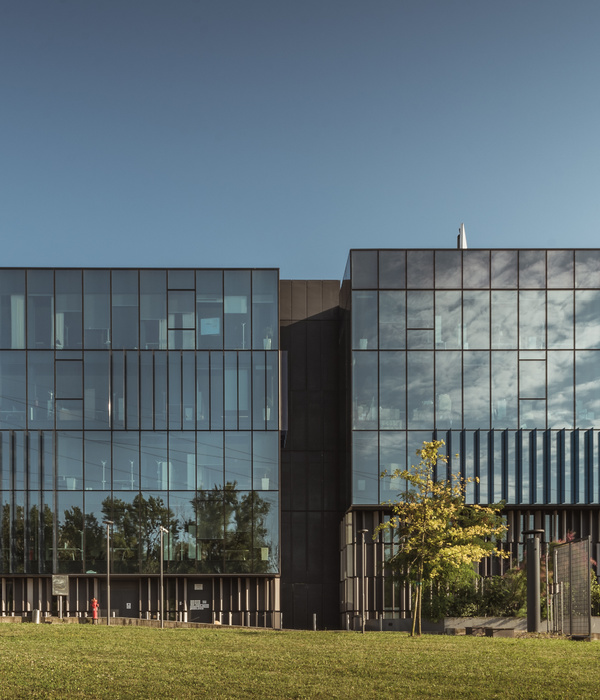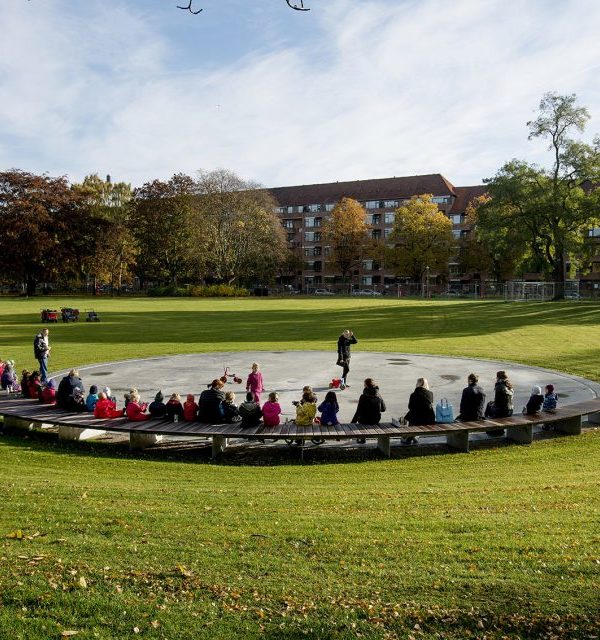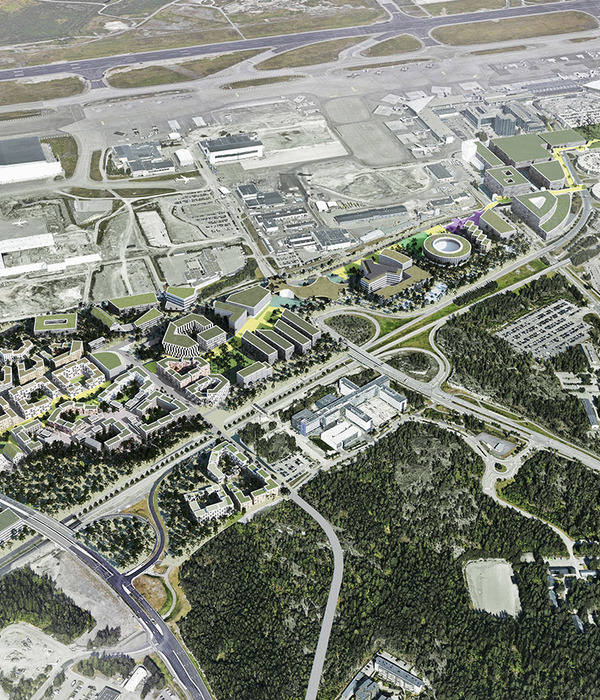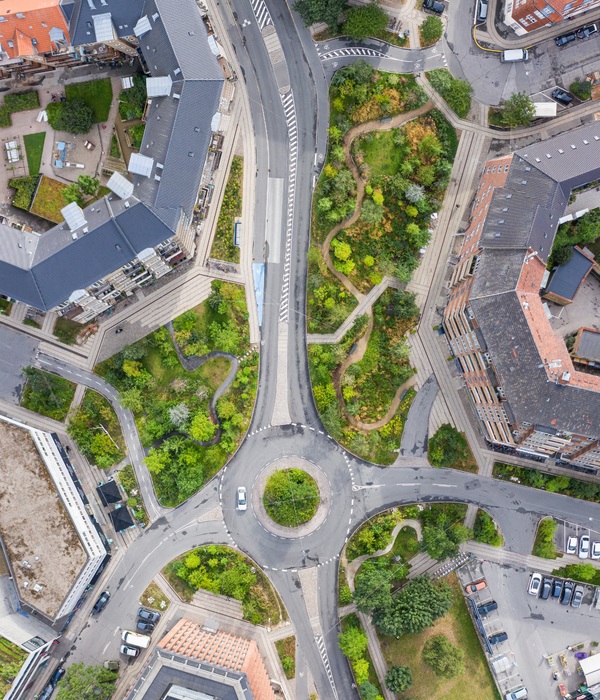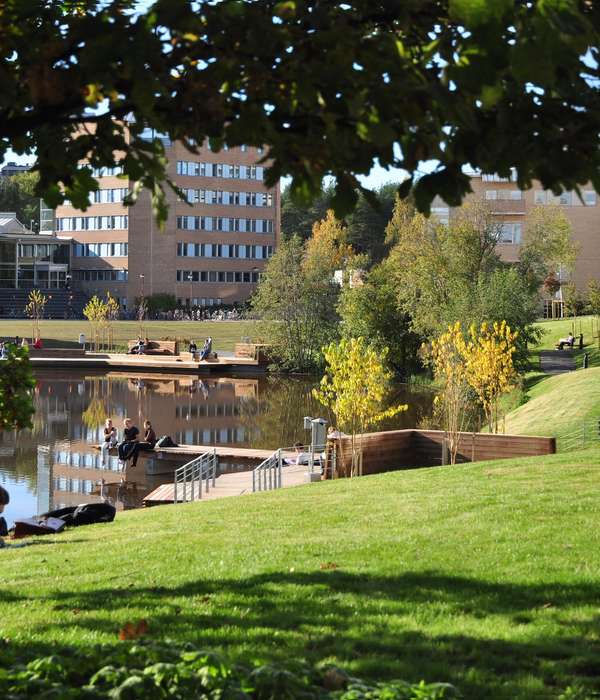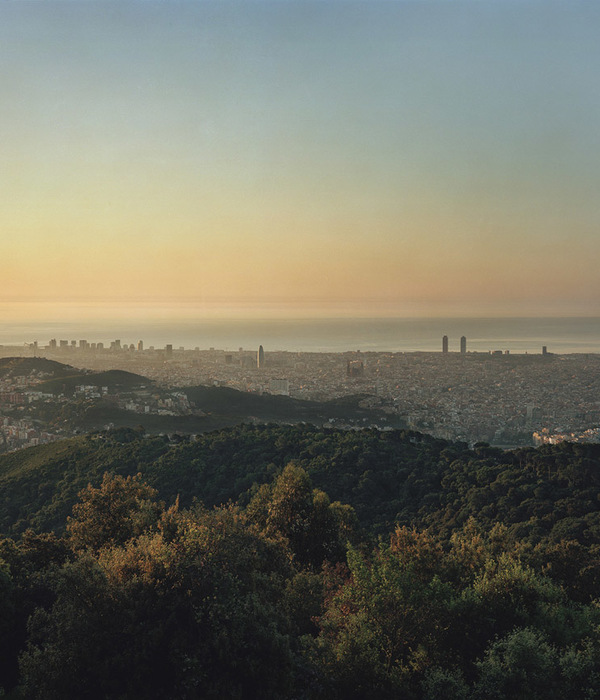更多关于本项目:
2013ASLA规划设计荣誉奖 – Ningbo Eco-Corridor
项目陈述 PROJECT STATEMENT
景观设计团队谨慎却又创造性地综合了当地的地形、水文以及植被特点,将不适宜居住的棕地转化为一道线性的“活体过滤器”。宁波生态走廊为当地的原生动植物创造了一片可供栖息、繁衍的场所,提高了公众公共卫生质量,带来了具有良好景观质量的公共场所,也重新定义了可持续发展的真正标准。第一阶段将将落成,久违的野生动物便在其中现身,这也意味着基地中的自然系统、水系和栖息地确实得到了实质性的修复。“活体过滤器”作为高性能优秀实践的成功为区域内尺度相近的城市树立了典范。宁波生态走廊向人们展示了对绿色基础设施的投入能够带来经济与生活质量上的双赢。
Through an innovative and carefully composed tapestry of topography, hydrology, and vegetation, the project transforms an uninhabitable brownfield into a linear “living filter.” Ningbo Eco- Corridor creates vital habitat for native flora and fauna, enhances public health, creates beautiful public spaces, and raises the bar globally for sustainable development. Just after the first phase of completion, rarely seen local wildlife has returned – A testament to the health of the restored natural systems, waterways, and habitats of the site. The successful “living filter” makes a case for similarly sized cities in the region and beyond to plan based on high-performance best practices. Ningbo Eco-Corridor is a clear example of the economic and quality of life successes that investing in green infrastructure can offer.
△ 景观总体规划:从不适宜居住的棕地到充斥着绿意的“活体过滤器”。
Landscape Master Plan: Transforms an uninhabitable brownfield into a green “Living Filter”
Photo Credit: Graphics Courtesy of SWA
项目说明 PROJECT NARRATIVE
背景与范围:一个全新的城市绿轴
宁波位于长江三角洲生态区的南部。自古以来,这里河道纵横,广阔的土地被河岸林、芦苇沼泽和农田所占据着。然而,在高速城市化发展的压力之下,生态走廊区内的运河被转作工业用途,同时又缺乏有效的分区和对污染的控制,种种因素结合在一起,在20世纪末其水质已严重恶化。
2002年,为了缓解宁波老城发展的压力,同时也为未来城市扩张打下兼顾经济与生态的平衡发展基础,宁波规划局展开了对宁波东部新城的开发计划。6平方英里的综合性城市用地将为不断增长的人口提供充足的居住、生活空间。而宁波生态走廊正是位于这片城市扩张区的中心地带。在这片线性的绿地网络之中,人类与野生的动植物将和谐共处,共同繁衍生息。
设计团队深知湿地和水生生境对这片生态区意义重大,因此尽其所能针对地域特点进行干预,恢复湿地的做法不仅符合新时代的生态意识,同时也具有历史和文化意义。占地56英亩的第一阶段已于今日完工,而第二阶段的工程将在年内继续开展。
设计意图:活体过滤器
在工业时代来临前,宁波的运河系统一直承担着运输、灌溉与防洪三项任务。在生态走廊的一期设计中,景观团队将雨虹管理和生态功能与公园独特的游憩空间相结合,让运河的旧日重现。对于土壤、水和植被多层次的精心设计为居民提供了兼具休闲娱乐和教育教学功能的场所,在社区与运河间建立起紧密的凉席,同时也在城市环境中创造了数个生态栖息地。
“活体过滤器”作为高性能优秀实践的成功为区域内尺度相近的城市树立了典范。宁波生态走廊向人们展示了对绿色基础设施的投入能够带来经济与生活质量上的双赢。
设计方法
地形:
周边开发地区挖出的多余土方被二次利用,在生态走廊区内塑造出起伏的山丘河谷。这些精心排布的地形为雨洪管理奠定了基础。
水文:
现存缺乏系统规划的不连贯、断头运河系统将不复存在,取而代之的是一系列能够辅助重建原生生态系统,自由流淌的小溪、河流、池塘与沼泽。新建成的河道可以改善运河水质,让其达到适宜生态修复和休闲娱乐所需的水质要求。
植被:
大量本土植被的使用将在走廊全尺度内起重建多样化的植被群落,吸引本土的野生动物重回领地。精心挑选的植被种类营造出独特的场所感:随着地形的起伏,不同高度、形态与色彩的植物被组合搭配,创造出独特的空间格局。
滨河生态栖息地改造:
现存的不透水垂直河岸将被平缓的种植河岸所取代。繁茂生长的植被成为一道绿意融融的缓冲带,为水生生物提供栖息地,同时也一点点净化运河以及雨水径流中的污染物。或立或倒的树木作为野生动物栖息地结构散布在河道的两侧,带来多样化的栖息环境和物种群落。
重塑人与自然的联系:
公园设计与道路系统规划让其成为了城市环境中自然演替过程的典范。生态沼泽、雨水花园、水生植物园以及经过修复的栖息地所处的位置都经过了仔细考虑,以最大化其功能,而同时,栈道、踏石、桥梁和百叶又让人们能够深入其中,在不影响动植物生长的同时提供近距离观察的可能性。
可持续设计的典范
生态走廊支撑起宁波新城的开放空间系统,划分、串联起性质、功能各不相同的各个场地。延绵两英里的生态走廊与周围的城市肌理和自然体系完美结合,与城市交相辉映、相得益彰。
景观设计团队谨慎却又创造性地综合了当地的地形、水文以及植被特点,将不适宜居住的棕地转化为一道线性的“活体过滤器”。通过重建区域内的生态系统,宁波生态走廊一期工程为当地的原生动植物创造了一片可供栖息、繁衍的场所,提高了公众公共卫生质量,带来了具有良好景观质量的公共场所,也重新在中国和世界范围内定义了可持续发展的真正标准。
△ 综合了地形、水文与植被设计的线性“活体过滤器”。
Composing topography, hydrology, and vegetation: a linear “Living Filter”
Photo Credit: Graphics Courtesy of SWA
△ 改造前:基地内极富特色的古老运河因为工业生产、有效分区的缺乏和对污染的不加控制水质严重恶化。
Before: Within the Eco-Corridor site, the historic canals that characterize the Ningbo region had become severely degraded with the introduction of industrial uses in the absence of effective zoning and pollution controls.
Photo Credit: Photos Courtesy of Hui-Li Lee, Jack Wu
△ 改造后:线性的绿地网络之中,人类与野生的动植物和谐共处,共同繁衍生息。
After: A linear network of green spaces where humans, wildlife, and plants can reside, coexist, and prosper. Photo Credit: Photos Courtesy of Tom Fox
△ 桥梁为行人与骑行车联系起两岸的道路,同时也呼应着场地悠久的工业历史。
Bridge invokes and celebrates industrial past and accommodates pedestrians and cyclists.
Photo Credit: Photos Courtesy of Tom Fox
△ 悬空的栈道让城市地表径流可以毫无阻碍的流入绿地,层层过滤深入地下。
Elevated walkways allow urban runoff to be filtered without interruption.
Photo Credit: Photos Courtesy of Tom Fox
△ 水生植物园在缓解暴雨引发的洪涝灾害的同时,维护了生物的多样性。
Aquatic Garden celebrating storm water mitigation and biodiversity.
Photo Credit: Photos Courtesy of Tom Fox
△ 秋色中的亲水平台与步行桥。
Riparian edge in autumn with water access platform and pedestrian bridge. Photo Credit: Photos Courtesy of David Lloyd
△ 踏石小道顺着缓坡微微起伏,穿过雨水花园。周边开发地区挖出的多余土方被二次利用,在生态走廊区内塑造出起伏的山丘河谷。
Stepping stone passage across rain garden and gentle landform. Incorporating construction fill from the surrounding development areas, the corridor is carefully graded to create hills and valleys that direct the flow of water across the site.
Photo Credit: Photos Courtesy of Tom Fox
△ 野趣十足的自然山体中,一片五彩缤纷的花园为游客带来了多样化的空间体验。无论是色彩、形态还是坡度,都与缓缓起伏的山坡形成了鲜明的对比,带来更丰富的空间层次。
A colorful Perennial Garden within a wilderness-like hill offers different experiences for the visitors. Through color, texture and slope, a surprising contrast has been created to compliment the gently sloped hill.
Photo Credit: Photos Courtesy of David Lloyd
△ 滨河栖息地改造:硬纸河道被缓缓下降的自然河岸所取代,创造了一片水生生境。或立或倒的树木作为野生动物栖息地结构散布在河道的两侧,带来多样化的栖息环境和物种群落。
Riparlan Habitat Improvement: Replaces existing hard wall banks with soft, sloping vegetated banks for aquatic habitat. Wildlife habitat structures like logs and perch trees are planned along the riparian edge to jumpstart habitat complexity and species richness functions.
Photo Credit: Graphics Courtesy of SWA
△ 在缓缓下降的自然河岸生境中,白鹭、黑水鸡、小䴙䴘随处可见。
Soft, sloping vegetated banks for aquatic habitat, egrets, moorhen, and little grebes are commonly found along the water’s edge.
Photo Credit: Photos Courtesy of Tom Fox
△ 河岸边树立的原木为鸟类提供落脚之处;覆盖在步行桥两侧百叶则一定程度上阻隔了人类活动对鸟类的影响。
Riparlan edge with recycled perch trees for birds; Pedestrian bridge covered with bird blind mitigates human interruptions.
Photo Credit: Photos Courtesy of Tom Fox
△ 一片自然丛林在密密麻麻的城市建筑环境中茁壮的成长着。自生态廊道一期工程竣工以来,野生动物群落呈现出高速增长的状态。
Wild nature with the background of the forest of urban concrete buildings. Wildlife population has rapidly increased since eco-Corridor phase I completion.
Photo Credit: Photos Courtesy of Tom Fox
Context & Scope: A New Urban Green Spine
Ningbo City lies in the southern part of the Yangtze River delta eco-region. This area was historically known for its extensive riparian forests, reed swamps, rural agricultural cultivation, and a vast network of canals. As a result of rapid urbanization, by the end of the 20th century the canals of the Eco-Corridor site were severely degraded due to a disastrous combination of industrial use and lack of effective zoning and pollution control.
In 2002, with the dual intention of alleviating development pressure on Old Ningbo City and setting a precedent for a balanced, ecological approach to further urban expansion, the planning department called for a master plan for “Ningbo Eastern New City,” which includes six square miles of mixed-use urban development to accommodate the growing population. Ningbo Eco-Corridor is located at the center of this urban expansion. It provides a linear network of green spaces where humans, wildlife, and plants can reside, coexist, and prosper.
Recognizing that wetland and aquatic habitats hold the greatest conservation significance for this eco-region, the design team focused their energies on a site-specific intervention that would have historical and cultural relevance in the new era of eco-consciousness. Phase 1 (56 acres total) was recently completed, and work on Phase 2 is scheduled to begin this year.
Design Intent: A living filter
Pre-industry, the network of canals accommodated the diverse functions of transportation, irrigation, and flood control. Within the Eco-Corridor Phase 1 site, water management and ecological functionality were woven into a unique park and recreation area, simulating the original canal functions. Carefully designed layers of soil, water, and vegetation offer recreational and educational opportunities, foster an increased community relationship to water, and support natural habitat in an urban context.
The resulting successful “living filter” makes a case for similarly sized cities in the region and beyond to plan cities based on high-performance best practices. Ningbo Eco-Corridor is a clear example of the economic and quality of life successes that investing in green infrastructure has to offer.
Design Approach
Topography: Incorporating excessive dirt from the surrounding development areas, the entire Eco-Corridor zone is carefully graded and crafted into contours creating a terrain of hills for recreation and valleys for storm water management.
Hydrology: Replacing the existing system of dead-end and disconnected canals is a new meandering water course, with series of free-flowing rivulets, streams, ponds, and marshland that will support the re-establishment of the indigenous ecology. The newly constructed watercourse improves the quality of the canal water and makes it suitable for ecological restoration and recreational use.
Vegetation: An emphasis on native vegetation supports the re-establishment of diverse plant communities along the length of the corridor and encourages colonization by indigenous wildlife. Plant selection also creates a unique sense of place: together with topographical variety, differentiation of species into groupings based on height, texture, and color creates distinct spatial patterns.
Riparian Habitat improvement: Replaces existing impervious, vertical canal banks with soft, sloping vegetated banks. The riparian planting edge provides a green buffer and aquatic habitat, and aids the removal of contaminants from canal water and storm water runoff. Wildlife habitat structures like logs and perch trees are placed along the riparian edge to jumpstart habitat complexity and species richness functions.
Reconnecting People and Nature: The park and trail design provides a clear example of natural processes in an urban setting. Bio-swales, rain gardens, an aquatic garden, and restored habitat were all carefully sited for maximum function, but can be easily assessed or observed by elevated boardwalks, stepping stones, bridges, and bird blinds.
A Model for Sustainability
The Eco-Corridor serves as the spine of Ningbo New City’s open space system, creating and connecting a variety of land uses. Extending two miles, the corridor merges seamlessly with the adjacent urban fabric and natural systems, creating a symbiotic relationship between the greenway and surrounding city.
Through an innovative and carefully composed tapestry of topography, hydrology, and vegetation, the Ningbo Eco-Corridor transforms an uninhabitable brownfield into a linear “living filter.” By restoring the ecological network in this region, Phase 1 of the Ningbo Eco-Corridor creates vital habitat for native flora and fauna, enhances public health, creates beautiful and enjoyable public spaces for local and neighboring communities, and raises the bar for sustainable development in China and beyond.
Lead Designer:
Hui-Li Lee, ASLA
SWA Group Team Members:
Hui-Li Lee, ASLA
Roy Imamura
Chih-Wei Lin, ASLA
Scott Chuang
Jack Wu
Chih-Wei Chang, ASLA
Nancy Coutler
Amity Winters
Luis Kao
Xun Li
Kathy Sun
Huiqing Kuang
Architect:
Shen-I Chiou
Marc Ojanen
Ojanen_Chiou Architects LLP
Environmental Consultants:
Mark Merkelbach
Herrera Environmental Consultants
Galen Fulford
Biomatrix Water
Local Design Institute:
Ningbo Landscape Architecture Design Research College
MORE:
SWA
,更多关于他们:
SWA
.
更多关于本项目:
2013ASLA规划设计荣誉奖 – Ningbo Eco-Corridor
{{item.text_origin}}

